Last Updated: 02/10/2025
8 Common Fish Tank Problems and How to Fix Them
Experiencing cloudy water, algae, or sick fish? Our vet's guide covers the 8 most common aquarium problems, from fin rot to white spot. Learn why most issues link back to water quality and discover simple, effective solutions to keep your tank thriving.
Author: Dr Emilee Lay BVSc BSc (Vet) Hons
Reading Time: 15 minutes - medium read
Taking the plunge into fishkeeping is a fin-tastic adventure, but sometimes the waters can get a little murky. Many of the most common aquarium issues, from cloudy water to unwell fish, often stem from just a few key areas: poor water quality, an improperly cycled tank, and skipping quarantine for new arrivals.
The good news is that with a little patience during setup and a simple maintenance routine, you can prevent most problems before they start. A healthy tank will flourish for years to come. To help you navigate these waters, let's dive into the top 8 common fish tank problems and how to solve them.
Poor water quality
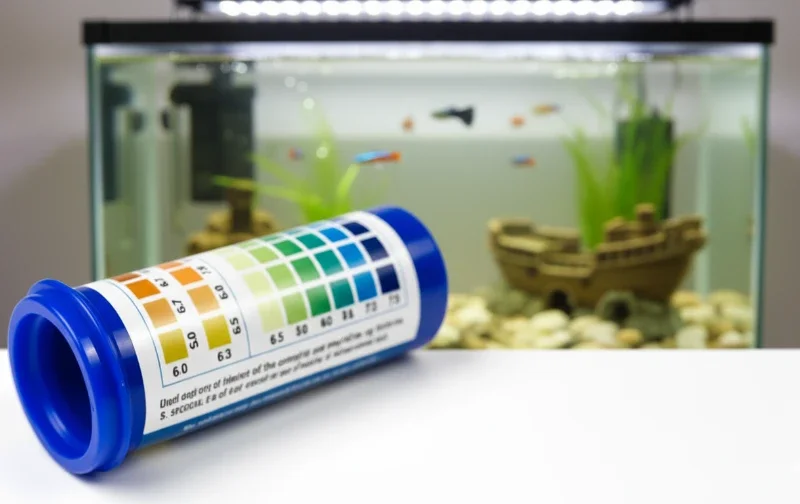
The importance of water quality
Regular water changes and cleaning are key to a healthy aquarium. Think of your tank as a closed ecosystem - any waste from leftover food, fish poop, or dead plants builds up and can quickly overwhelm its delicate balance.
This is where the 'Nitrogen Cycle' comes in. It's a natural process where beneficial bacteria act as a clean-up crew, breaking down toxic ammonia into nitrite, and finally into less harmful nitrate. A healthy, fully cycled tank should have 0 ammonia and 0 nitrites. When waste builds up, this cycle gets overloaded, resulting in poor water quality that can stress your fish and make them more susceptible to disease.
How to get your water quality back on track
If your tests show a problem, follow these steps to improve your water quality:
- Test your water regularly: Use a testing kit to find out your exact levels of ammonia, nitrite, and nitrate. You can't fix what you can't measure!
- Perform partial water changes: For routine maintenance, a 20% water change weekly is a good rule. For dangerous ammonia or nitrite spikes, a larger change of up to 50% may be needed to dilute the toxins quickly.
- Do a deep clean: Use a gravel vacuum to remove waste from the substrate. Reduce the amount you're feeding for a few days to decrease the amount of waste being produced.
- Check your filter: Make sure your mechanical filter isn't blocked and is working correctly. A quick rinse of the filter media in old tank water (never tap water!) can clear blockages without harming your good bacteria.
- Use chemical filtration: Products like ammonia detoxifiers or activated carbon can be added to your filter to help neutralise harmful chemicals and bring your parameters back to normal.
- Add beneficial bacteria: Give your biological filter a boost by adding a bacterial supplement. This helps strengthen the Nitrogen Cycle.
You may need to repeat these steps every few days until your water parameters are back in the safe zone. Tanks that are overstocked or have messy fish (like goldfish) will always require more frequent water changes to stay healthy.
For more detailed information, check out our guides on Cycling a Fish Tank and Fish Tank Maintenance.
Cloudy tank water
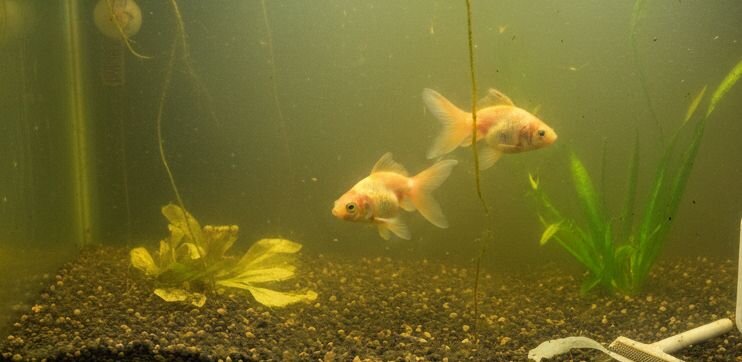
Waking up to a cloudy fish tank can be alarming for any fish parent. You've set everything up perfectly, and suddenly you can barely see your fish!
Why is my fish tank water cloudy?
Bacterial blooms
- For new tanks: This is a completely normal, and even expected, part of "cycling" a new tank. The best thing to do is... nothing! Resist the urge to do a big water change or clean your filter, as this will disrupt the process and prolong the cloudiness. The haze should clear on its own as the cycle stabilises. You can certainly add beneficial bacteria or live plants to your tank which can help boost the cycling process. Continue to monitor ammonia and nitrite levels during this time.
- For established tanks: If your tank is established but the water is cloudy then these bacterial blooms can be a result of poor water quality, or if you've overwhelmed or killed off your beneficial bacteria in your tank through over-cleaning, changing your filter media suddenly, or overstocking. Adding beneficial bacteria to support your tank is essential. If the bacterial bloom is from excess wastes or abnormal water parameters then partial water changes are a must. Removing debris from your tank such as fish poop, dead/decaying plants, and uneaten food can help improve your water clarity.
Unwashed gravel or substrate
Did you recently add gravel to your tank? Cloudy tank water can also be due to gravel that hasn't been thoroughly rinsed before adding to the tank. Make sure to rinse your gravel until the water turns clear before adding it in. If you've already added it in then you will need a gravel vacuum and fine wool in your filter to filter out the finer particles. Water clarifiers can help speed up the process.
Tannins from driftwood
If your water is brown or yellow it may be from tannins leeching from your driftwood. You can leech your driftwood in a tub separate from your tank until the water turns clear. Boiling can also speed up the leeching process. Tannins are not dangerous to fish and can create an ideal environment for certain fish by creating a "Blackwater" aquarium setup.
Algal blooms
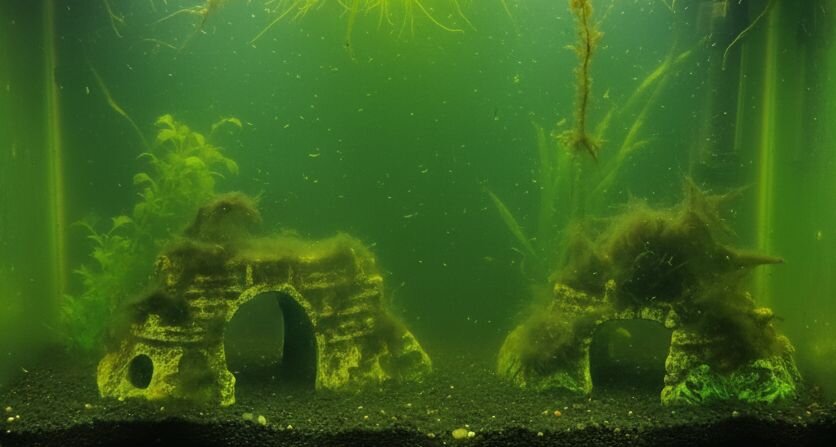
While decorative plants can enhance an aquarium, unsightly algal blooms are a common problem.
What causes algal blooms?
Algae thrive in two main conditions:
- Excessive light: Tanks that are well-lit or receive too much direct sunlight are prime environments for algal growth.
- Excess nutrients: Waste products and high nitrate levels in the water act as fertiliser for algae, which can lead to rapid blooms, sometimes appearing overnight.
How to Prevent and Manage Algae
1. Control the lighting
- Placement is key: Position your tank in a room with low to moderate light, and always keep it away from direct sunlight.
- Use a timer: Set your artificial aquarium light on a timer for no more than 8-10 hours per day.
- Adjust to your room: If your tank is in a naturally bright room, consider keeping the aquarium light switched off during the daytime.
2. Maintain water quality
- Regular maintenance: Perform regular water changes and clean your filter to reduce waste and nitrate levels.
- Keep it clean: Use an algae scraper to clean the glass and decorations, and be sure to remove any visible excess waste from the substrate.
- Be careful with planted tanks: Aquariums with live plants can be more prone to algae due to the use of lights and fertilisers. Always dose fertilisers according to the instructions to avoid adding excess nutrients to the water.
Other treatment options
- UV sterilizers: These devices can be very effective at eliminating free-floating algae from the water and can be found at specialty aquarium stores.
- Algae-removing chemicals: These should only be used as a last resort. They are more of a temporary "bandage fix" rather than a long-term solution.
Sudden fish death
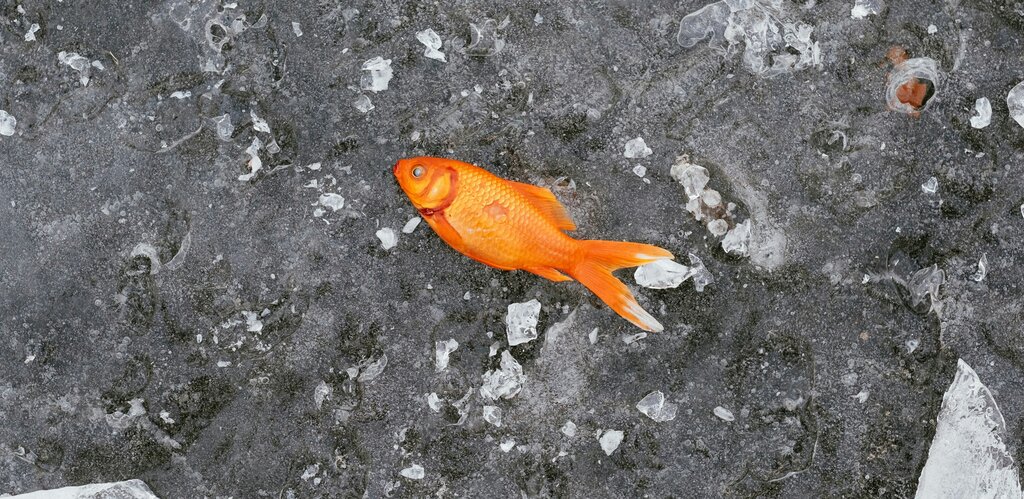
It can be very upsetting to find a fish has passed away, especially after the effort it takes to set up and maintain an aquarium. Fish have plenty of character and can come to recognise their owners (or at least, recognise that it's feeding time).
Common causes of sudden fish death
- Poor water quality: Spikes in ammonia, nitrite, and nitrate are common culprits.
- Inappropriate water parameters: The pH and temperature may not be suitable for the species of fish you keep.
- Poor oxygenation: Insufficient oxygen in the water.
- Disease: Bacterial, fungal, or parasitic infections can spread quickly.
What to do when a fish dies
- Remove the fish immediately: This prevents it from decomposing and further polluting the tank water.
- Test your water: This is the most crucial step. Check the pH, ammonia, nitrite, nitrate and temperature
- Adjust water parameters: If any levels are outside the normal range, perform a partial water change and use biological and/or chemical media to correct the parameters
- Observe your other fish: Look for any signs of illness or stress. Ask yourself the following questions:
- Are their scales and fins intact?
- Are they gasping for air at the surface?
- Are they lethargic or sitting at the bottom of the tank?
- Are they swimming erratically or floating abnormally?
- Is there any bullying or aggression between fish?
- Could you be overfeeding them?
- Do you see any redness on their scales or gills?
For sudden or mass fish deaths, it is best to consult an exotics veterinarian who can assess your remaining fish and tank setup. For more information about feeding, read through our guide to Feeding Your Fish.
Dropsy
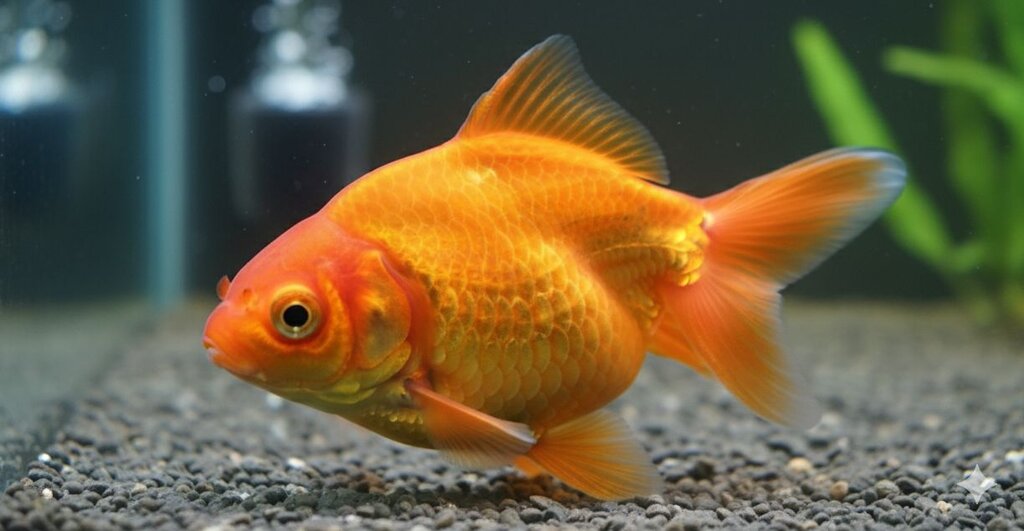
If your fish are displaying the following symptoms, they may have a condition commonly known as "dropsy":
- Swimming abnormally
- Appearing swollen or bloated
- Scales bulging outwards, resembling a pine cone
What is dropsy?
"Dropsy" is not a specific disease but rather a sign of an underlying health issue. It's caused by a build-up of fluid inside the fish's body cavity.
Common causes of dropsy
- Organ failure
- Bacterial infection
- Poor water quality
- Parasite infection
How to treat dropsy
Treatment success depends on the underlying cause, but the following steps can provide supportive care:
- Test your water immediately: Ensure all parameters (pH, ammonia, nitrite, nitrate) are within the correct range for your fish.
- Set up a quarantine tank: Isolate the sick fish in a separate, smaller tank with an established/cycled filter. This allows you to medicate and observe the fish without affecting your main tank's ecosystem.
- Medicate if necessary: If a bacterial infection is suspected, broad-spectrum antibiotics can be used.
- Important: Remove any activated carbon from your filter before adding medication, as it will absorb the treatment from the water.
- Use aquarium salt: Aquarium salts can help improve a fish's immune response but should be considered supportive care, not the primary treatment.
- Seek professional help: Whenever possible, have your fish assessed by an experienced aquatic veterinarian.
In Australia, services like The Fish Vets are available nationwide. Local exotic pet clinics may also be able to assist.
Fish swimming upside down
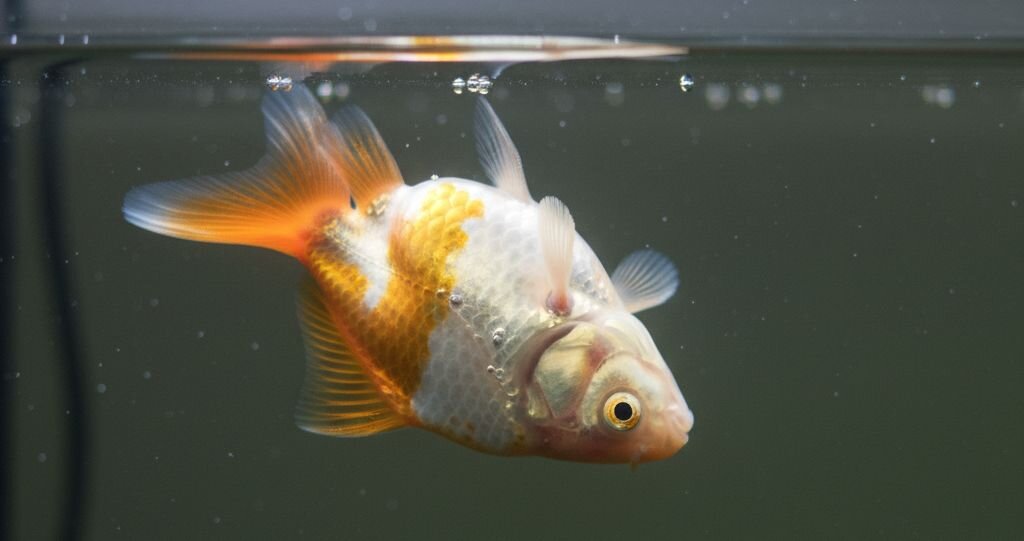
Swim bladder problems in fish
The swim bladder is an internal organ that helps a fish control its neutral buoyancy in the water. When this organ is affected by disease or inflammation, you may notice your fish struggling to swim correctly.
Signs of a swim bladder problem:
- Difficulty swimming
- Swimming upside down or on their side
- Sinking to the bottom of the tank
- Being stuck floating at the surface
Common causes of swim bladder issues:
- Poor water quality
- Bacterial infections: Infections can inflame the swim bladder and affect its function.
- A suppressed immune system
- Anatomy: Certain breeds are more prone to issues. Fancy goldfish such as Ranchus in particular are prone to swim bladder issues due to their abnormal anatomy. Goldfish inflate their swim bladders thanks to a special duct between their esophagus and swimbladder. As they inhale food at the tank's surface, they suck in a lot of air, which can lead to swim bladder issues.
How to manage swim bladder problems
Many old wives' tales will mention feeding peas and adding aquarium salts to the water. Peas can help with swim bladder issues that are due to blocked swim bladder whilst adding aquarium salts can help boost their immunity. Ultimately, treatment depends on the underlying cause, but you can take the following steps to help your fish.
- Check your water parameters first: Always test your water for pH, ammonia, nitrite, and nitrate levels. Poor water quality must be corrected immediately.
- Isolate your fish: Move the affected fish to a smaller quarantine or "hospital" tank. This prevents them from being bullied by tank mates or injuring themselves on tank decor.
- Address digestive issues: If the swim bladder issues are caused by digestive problems then increase the temperature of your tank, and provide high-fibre foods such as cooked peas (this is applicable mainly to omnivorous or vegetarian fish).
- Consider medication for infections: If a bacterial infection is suspected, broad-spectrum antibiotics may be necessary.
- Provide supportive care: Adding aquarium salt can help boost a fish's immune system, but it is not a primary treatment for the disease itself.
It's important to know that depending on the cause, swim bladder disease can sometimes be fatal.
For a proper diagnosis and treatment plan, it's always best to have your fish assessed by an experienced aquatic veterinarian. In Australia, services like The Fish Vets and other local exotic specialty clinics are available to help.
White spots on fish
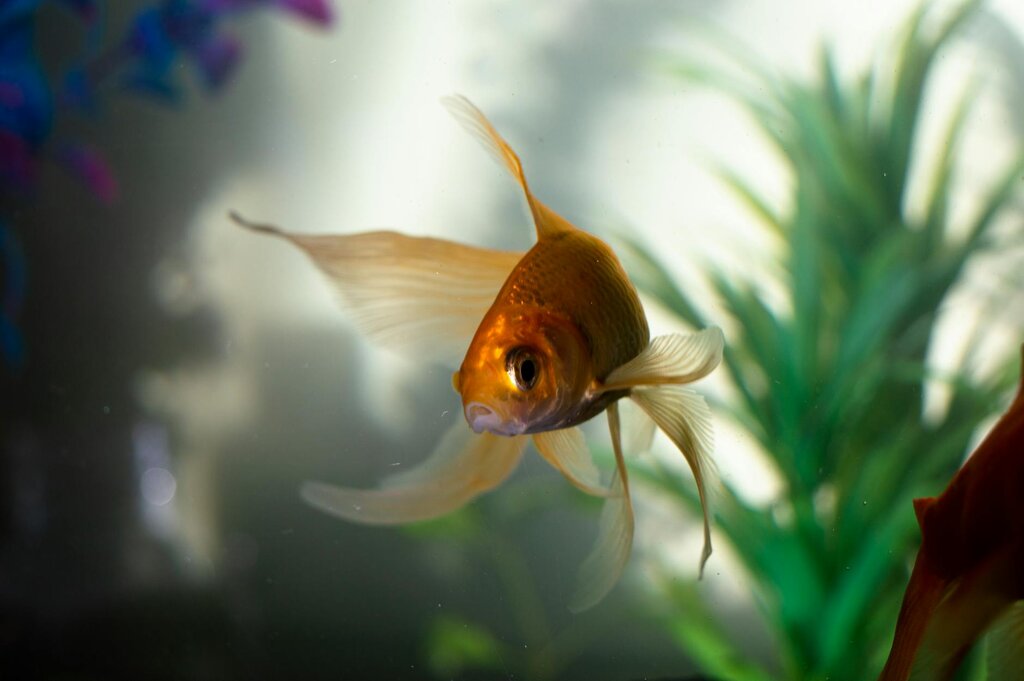
If your fish appear to be covered in a fine white, sand-like, or salt-like substance, they may have White Spot disease, also known as Ich.
What is Ich, or White Spot Disease?
- Ich is a highly contagious parasitic disease caused by Ichyophthrius multifilis.
- These parasites multiply rapidly in your tank and attach to your fish, feeding off their bodies.
The Ich life cycle (three stages):
- Feeding stage: These parasites multiply rapidly in your tank and then attach themselves to your fish feeding off their bodies. At this stage, they are fully developed and often protected from most medications.
- Detached stage: The parasites drop off your fish and attach to the substrate, plants, or other surfaces in your tank. This is the stage when they are most susceptible to water treatments.
- Reproductive stage: The parasites begin reproducing, releasing new parasites into the water in search of a new host. If no host is found, they will die.
Why is Ich dangerous?
- Ich can be fatal. Each round of its life cycle drastically increases the number of parasites in your tank.
- The continuous feeding by parasites weakens your fish, making them susceptible to secondary infections.
Prevention is key:
- Maintain excellent water quality: Stable and clean water helps keep your fish's immune system strong.
- Quarantine new additions: Always quarantine new fish or plants in a separate tank for several weeks before introducing them to your main aquarium. This helps prevent introducing diseases like Ich. Find out more in our Guide to Setting Up a Fish Tank.
Treating Ich:
- Increase tank temperature: Gradually raise the aquarium temperature (within safe limits for your fish species)
- Gravel vacuuming: Regularly vacuum your substrate to remove parasites that have dropped off your fish and are in their vulnerable stage.
- Medication: Add a White Spot Remedy or specific Ich treatment available from your local aquarium store.
- Consider a hospital tank: Using a separate hospital tank for treatment can be beneficial, especially if only a few fish are affected or if the medication is harmful to plants or beneficial bacteria in your main tank.
- Monitor water parameters: If treating the entire main tank, closely monitor water quality.
Frayed fins
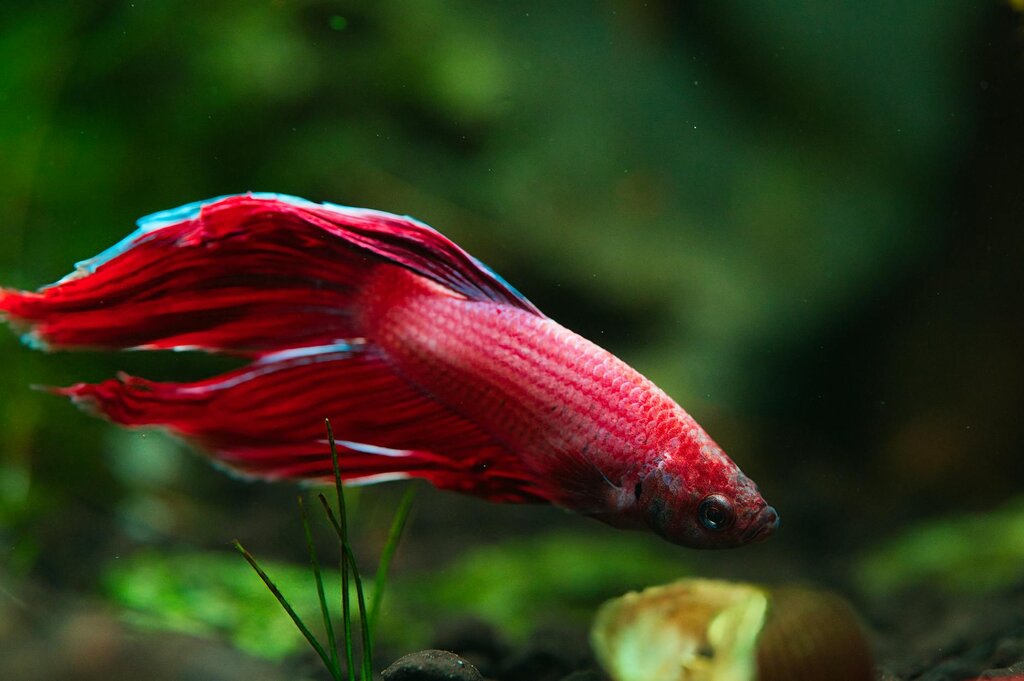
Have you noticed your fish's beautiful, flowing fins looking a bit ragged or worse for wear? They might be showing signs of fin rot.
Fin rot is usually a sign of underlying health issues or poor water quality. It is caused by bacterial infections secondary to trauma (from other fish nipping or attacking the delicate fins) and stress (from poor water quality, overcrowding, or other diseases).
Fins can appear frayed, fuzzy, milky, or even bloody.
How to prevent fin rot
Prevention is always better than cure. Since fin rot is typically linked to stress, creating a stable and clean environment is the best defence.
- Maintain excellent water quality: This is the most crucial step. Perform routine partial water changes, regularly test your water parameters (ammonia, nitrite, nitrate, and pH), and ensure your filter is working correctly.
- Avoid overcrowding and overfeeding: Too many fish in one tank or excessive uneaten food can quickly lead to high levels of ammonia and nitrates, which are major stressors for fish.
- Choose compatible tank mates: Some fish species are territorial or aggressive and may nip at the fins of their tank mates. Research your fish to ensure they can live together peacefully. If you have a known bully, it's best to move them to a separate tank.
- Create a safe environment: For fancy breeds with long, delicate fins, like many goldfish varieties, be mindful of sharp or jagged tank decorations that could easily cause injury.
How to treat fin rot
If you suspect your fish has fin rot, taking prompt action can lead to a full recovery, with the fins often growing back over time.
- Separate the affected fish into a hospital tank
- Start treatment: You can use water medications such as Melafix to help treat any bacterial infections. When using any in-water medication, remember to remove the activated carbon from your filter, as it will absorb the medication and stop it from working.
- Consider aquarium salt: Adding aquarium salt can help support the fish's immune system during recovery. Always follow the dosage instructions on the product packaging for the species you are keeping.
FAQs
While the challenges of fishkeeping can sometimes seem daunting, a closer look at these common problems reveals a simple truth: a healthy tank starts with healthy water. The vast majority of issues, from cloudy water and algal blooms to serious diseases like fin rot and white spot, can be prevented by establishing and maintaining excellent water quality.
By committing to a routine of regular water testing, consistent maintenance, and careful observation of your fish, you can stay ahead of most problems. Ultimately, a little proactive care is all it takes to ensure your aquarium remains a stable, thriving, and beautiful ecosystem for you and your fish to enjoy.
Articles recommended for you
Our vet authored guide to the benefits of feeding your dog fresh food plus tips and advice for introducing it into their regular menu.
See our guide to protecting your pet from parasites from our vet team.
Thinking of getting a fish? Check out our guide for setting up a tank and home care tips!
Looking to understand horse feeds better? This comprehensive guide covers feeding recommendations for horses of all ages and disciplines.
Does your pet suffer from anxiety? Check out our Vet-guide for treatment options to help your pet.
History
Our experts continually monitor the health and wellness space and we update our articles when new information becomes available.
Thu 2 Oct 2025
Edited by Dr Gillian Hill BVSc (Hons)Dr Emilee Lay BVSc BSc (Vet) Hons
Veterinarian
Dr. Emilee graduated from the University of Sydney in 2018 with a Bachelor of Veterinary Science and Bachelor of Science (Veterinary Studies) and as a student worked for a number of years as a small animals and exotics nurse in clinics across Sydney. She is currently a practicing small animal and exotic vet along the Coast. Emilee holds a special passion for avian and exotic medicine (bunnies being her favourite patients), as well as animal behavioural medicine!

